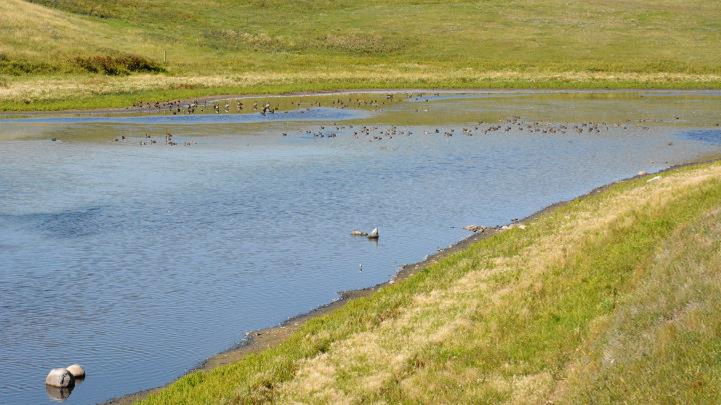
Ponds, sloughs, dugouts, potholes: these are all shallow open water wetlands by different names.
Habitat
Shallow open water wetlands look like small lakes. This is because the water is low enough to be a
wetland, at less than 2 m (6.5 ft), but too deep for emergent marsh plants to establish, like cattails and rushes. However, floating and submerged aquatic plants can be common in more nutrient-rich settings. Water levels are generally permanent but may fluctuate seasonally, exposing mudflats. The water in these wetlands comes from precipitation, run-off, groundwater, and streams. Pondweeds, water lilies, water milfoil, coontail, and duckweeds are typical plants of shallow open water wetlands. While animals include ducks, songbirds, herons, fish, frogs, and turtles.
Conservation
Shallow open water wetlands are important habitat and retain and store water, helping to moderate flooding, recharge groundwater, and maintain stream flows. Their biggest threat is drainage. In many areas, more than half of the original shallow water wetlands that existed have been drained for agriculture and urban development.

